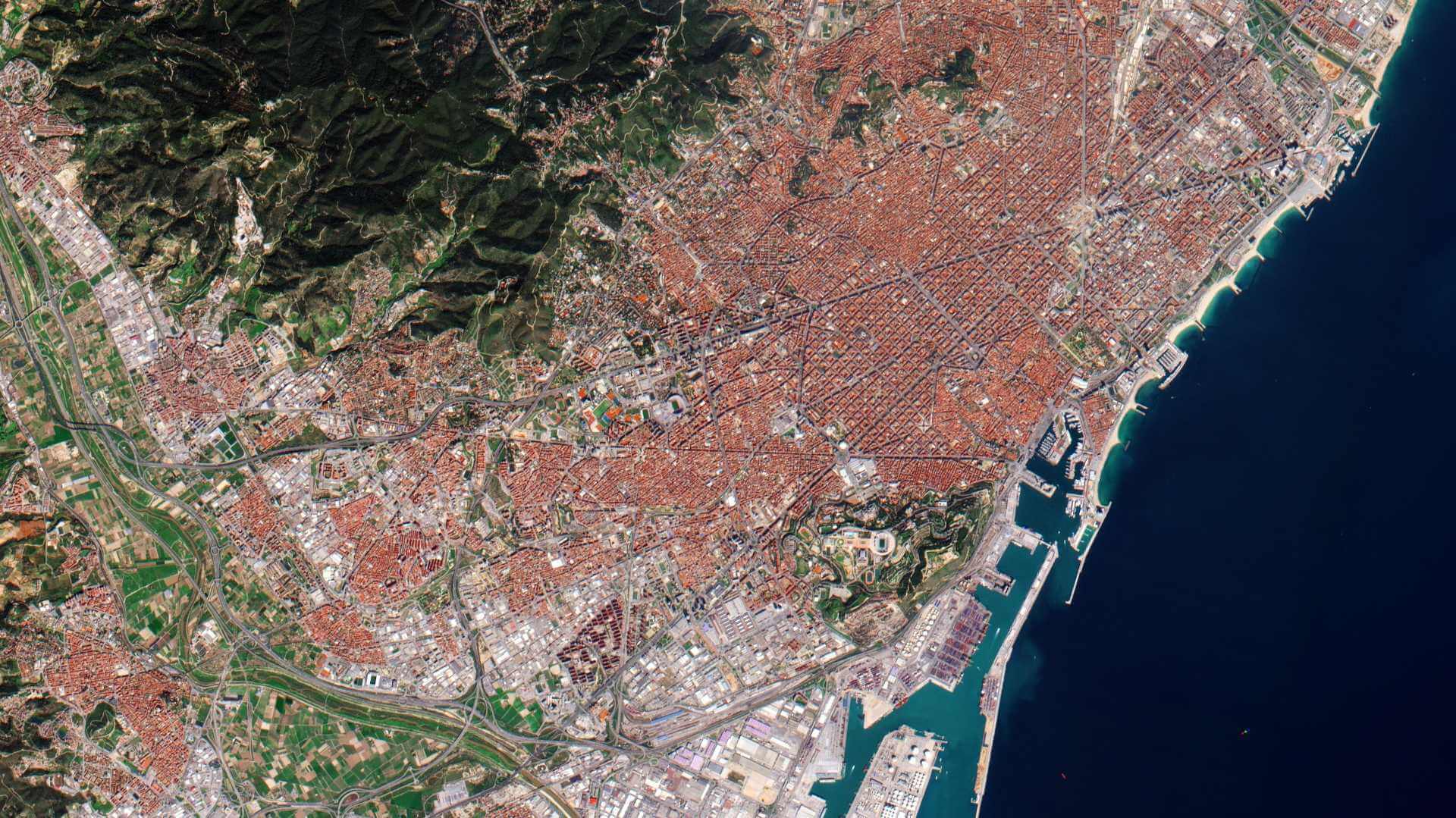About KOMPSAT-1
KOMPSAT-1 (Korean Multi-Purpose Satellite), also known as Arirang-1, was a South Korean Earth observation satellite which was launched on 21 December 1999. KOMPSAT-1 operated for eight years until satellite operations ceased on 30 December 2007 due to a loss of contact.
| Orbit Height | 685 km |
| Orbit Type | Sun-synchronous |
| Repeat Cycle | 28 days |
KOMPSAT-1 Objectives
The primary objective of KOMPSAT-1 was to capture imagery of the Earth’s surface for monitoring environmental changes, supporting land management activities, and aiding in disaster response.
KOMPSAT-1 Instruments
Electro-Optical Camera (EOC)
The Electro-Optical Camera (EOC) onboard KOMPSAT-1 collected panchromatic imagery of the Earth’s surface with a ground sampling distance of 6.6 m.
| Spectral Range | 0.51 - 0.73 µm (PAN) |
| Ground Sample Distance (GSD) | 6.6 m |
| Swath Width | 17 km |
| Modulation Transfer Function (MTF) | > 10% |
| Detector Line Array | 2592 |
| SNR | > 50 |
| Data Quantisation | 8 bit |
| Payload Power, Mass | 46 W, 835 Kg |
Ocean Scanning Multispectral Imager (OSMI)
The Ocean Scanning Multispectral Imager (OSMI) had a ground resolution of 1 km with a swath width of 800 km and was capable of generating imagery in up to six spectral bands (in the range 400 – 900 nm) with bandwidth and band-centre selection capabilities. The centre of each band could be varied in steps of 2.6 nm with bandwidth ranges from 5.2 nm (min) to 166.4 nm (max).
Space Physics Sensor (SPS)
KOMPSAT-1 also carried the Space Physics Sensor (SPS) instrument which was used to study ionospheric plasma and to characterise the low-altitude high-energy particle environment and study its effects on microelectronics.
KOMPSAT-1 Data
DATA COLLECTIONS
Through the online dissemination server, ESA offers registered users access to the following data collection:

